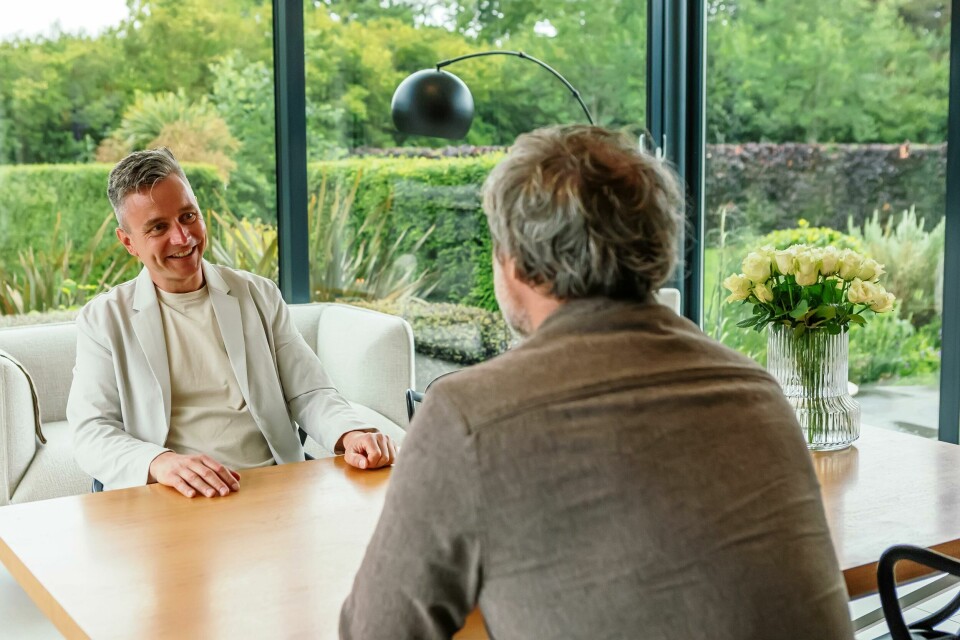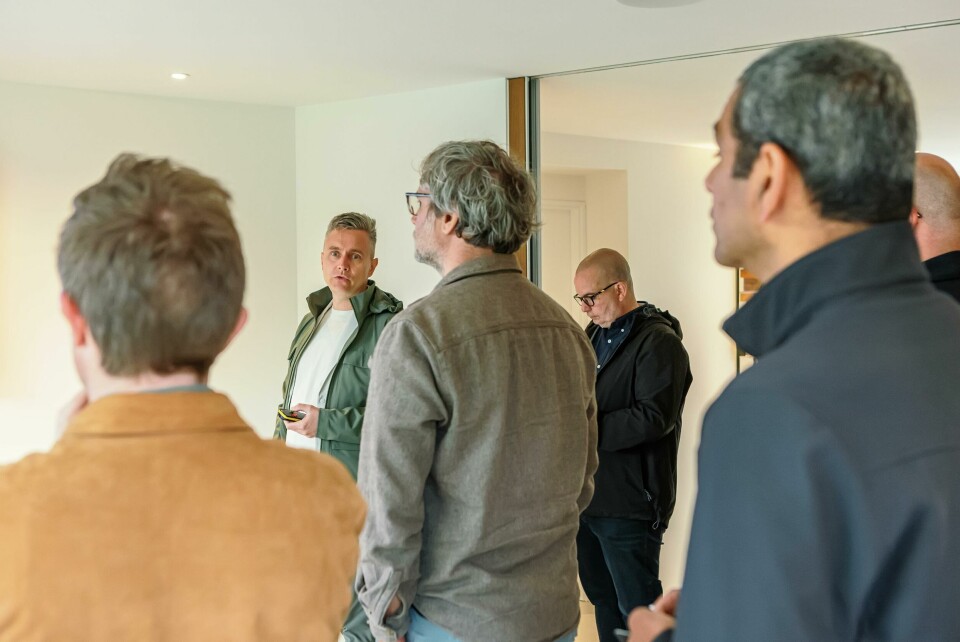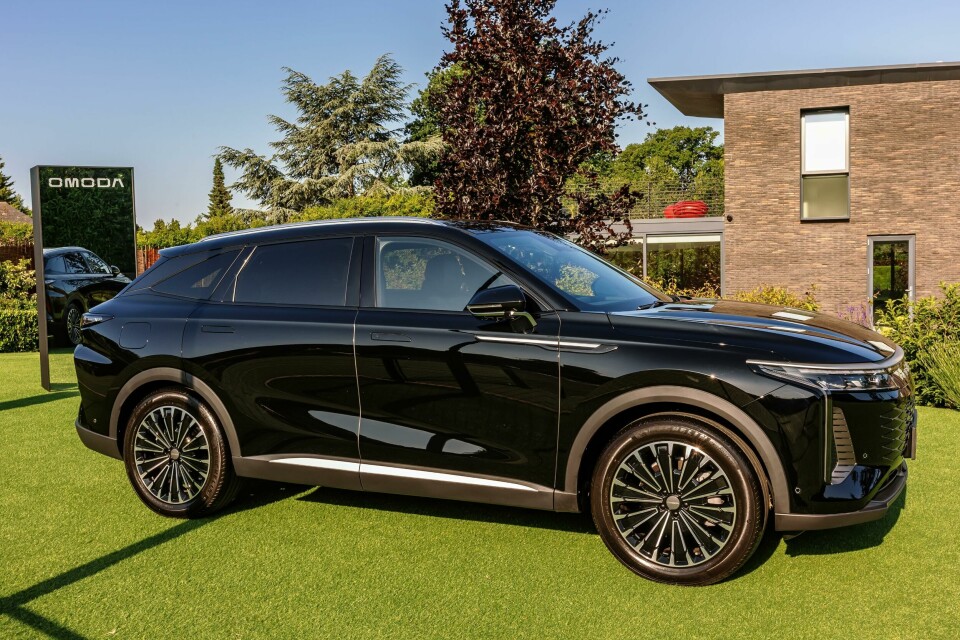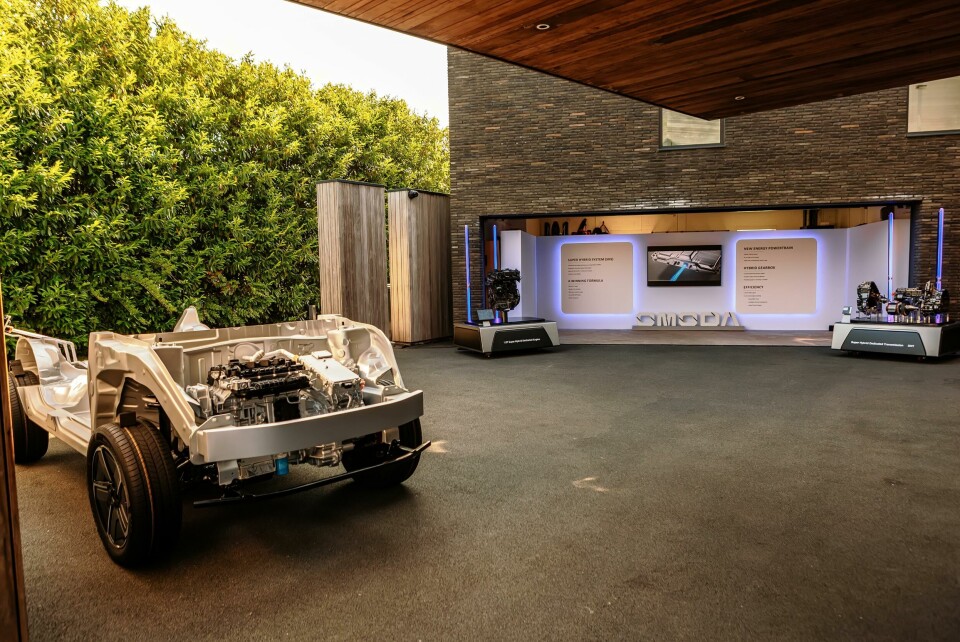
Chery’s Michael Duerr: “We can claim to be Europe’s most productive studio”
At a bespoke event down in Southampton, Car Design News grabbed some time with senior manager of Interior Design at Chery International, Michael Duerr, to speak about building a brand from scratch, AI and China speed
A graduate of Pforzheim and a veteran of GM and Opel, Michael Duerr joined Chery International in 2019 as senior interior design manager. Shortly after his arrival at the Chinese giant’s European design studio in Raunheim, near Frankfurt, then headed up by Kevin Rice, the design team was tasked with developing a new brand. Duerr was employee number nine in a design team that has grown to 64.
The brand in question was Omoda, launched in 2022, and targeting Generation C customers (the C stands for connected). Car Design News was invited to an exclusive event on the English south coast to get a closer look at the Omoda 9 flagship hybrid SUV where we caught up with Duerr.
Car Design News: Tell us a little about Omoda. What were its origins?
Michael Duerr: The design team was asked to work on a car but we were not told what the brand was. So it was very interesting from a product development point of view. Normally your starting point is the brand. We kept nagging, what is the brand? But it was new so even if they told us what it was supposed to be, we would not have much to go on.

We found out they wanted to target a young customer group – Generation C. We did deep research within our studios, not just in Shanghai, but also in Wuhu. We looked at cyberpunk, Ghost in the Shell: serious science fiction that projected into the future. We started asking questions about the customers. What do they do outside of their jobs? What makes them interesting? Do they go mountain biking? Or free climbing? Maybe they are artists on the side. Slowly the company started to understand that a person is mostly defined not by their profession, but by their hobbies and passions. And that helped us to develop the car.
CDN: What role did AI play in the development?
MD: Since we don’t have brand heritage, what we have to do in our product development is story building. So we build a story and we animate it. AI is actually a great support. However, you have to use it in a meaningful way. You don’t want the AI to steer your path. You want to control AI to your benefit, but still get where you want to be. So story building is very important because when we show a project to our leadership in China, as a sketch or doodle, they don’t care.

Even in Western OEMs, the designer might lose the flavour of the sketch when it turns into a rendering. So much can go wrong, which can take a long time to fix. And the idea might be dismissed because people lose interest.
I can claim we are the most productive studio in Europe
We create a narrative – a kind scenario where they can see it. Then back it up with visuals, and then with AI just to see if we hit the flavour that they like; the tonality, the calmness. Does it have to be more exaggerated? Does it have to be more lively? Once we have that locked in and confirmed, then we can develop the design. And we animate this very early because we were asked by our leadership before we even had a design picked, where’s the animation? You guys didn’t even pick a sketch, how do you want us to animate something!
CDN: I guess you had to recalibrate your approach…
MD: It didn’t follow our linear approach from doodle, sketch, rendering, class model, animation. Now, we pull the animation part almost to the beginning and create a movie. At that point the car is mostly mood and hints. Sometimes you just see the silhouette in some fog, or you see the headlight graphics doing something. They were asking for almost like a pitch animation.

CDN: This sounds a little like how a start-up would operate.
MD: Even though we are part of the company. It’s almost like a start-up. When you are a start-up in Silicon Valley, you have to go to investors with a pitch deck – you’re not showing up with the finished product. There is trial and error.
CDN: This is related to the famous ’China speed’ of course.
MD: China speed is the main thing we had to crack. And it took us literally five years. Normally for a show car for example, you have six months, sometimes nine months. We have four weeks. Now at this point, I can claim we are the most productive studio in Europe. We do three show cars a year because that’s the requirement being set. One for the Shanghai show, one for our big internal design day event, and one for the Guangzhou Auto Show.

CDN: Bloody hell.
MD: Yeah. And it’s more complex than that, if I can tell you about it.
CDN: Ja, for sure.
MD: On one side you have the speed factor. But there are very late decisions – not because the company doesn’t want to make a decision – but because the market is so dynamic in China you have to be flexible to redo it. You might have the greatest plan in the world, but if you dogmatically execute on this plan while the rest of the world just shifted, you are going to be out of business if you’re not careful. But you have to also keep some steadiness to build your brand. And this is what we’ll be working on.
CDN: What are the next steps for the studio?
MD: We would like to have the capacity for physical models because when it comes to refinement, especially on the exterior, a physical model is an absolute must. On the interior, we can make do with the virtual reality approach because you can judge the spaciousness of the car. You know, it does work. But of course, I love a seating buck.



